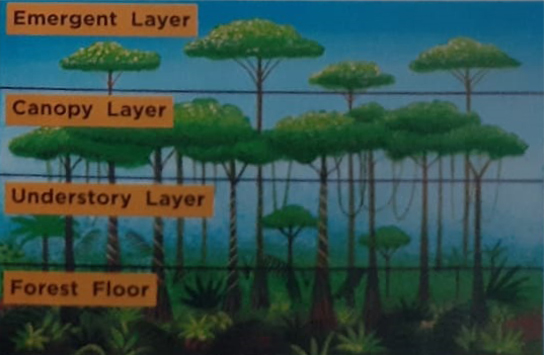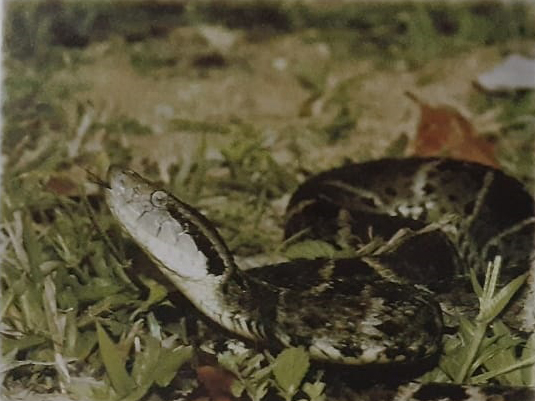AMOZON SNAKES
Introduction
Think of a dark forest. Trees of all sizes shade the forest floor. Birds call out from high branches. Animals and insects hide and play in the leaves. Snakes slither along the ground.
A tropical rain forest is a wet and warm place. Many different kinds of snakes live there.
Some snakes live in the middle layers of the rain forest. They are found in shrubs and trees. Other snakes live in the bottom layer of the rain forest. They spend most of their time in the rivers and swamps of the forest floor. And there are some snakes that slither from one layer to another.
The tropical rain forests of Central and South America are millions of y years old. This book is about a few of the snakes that live in these rain forests.
Rain forest layers
Chapter 1
Snakes in the Trees
Snakes that live in the trees of the rain forest have a few things in common. Most of these snakes are long and skinny. They also have angled scales along the underside of their bodies. These features help the snakes balance on tree branches and shrubs.
Snakes that live in trees have features that help them survive. Some of them use camouflage. Their colors help them blend in with their surroundings and hide from predators. The Amazon tree boa does this by looking like a branch. But it is a genuine snake.
The Amazon tree boa has extra-large eyes that can spot prey. When prey comes along, the snake uncoils and scoops it up. This snake stays in the trees most of the time. When it spots an animal in the water, it drops down and quickly swims after it.
Amazon tree boas don't miss much Their eyes are bigger than those of most other snakes.
Boa Constrictors
How does a boa constrictor tell the difference between a warm-blooded animal and a cold rock? Like other snakes, it has a pit above each eye. These pits help it sense when another animal is near.The pit of the Columbian red-tailed boa constrictor
Can you guess how the emerald tree boa got its name? Like an emerald jewel, this tree snake is green. It's hard to tell it from the green shrubs and branches where it lives. It may look harmless, but it is very dangerous. Like other boas, the emerald tree boa grabs its prey with its long teeth and squeezes it to death. Then it swallows the creature whole.
The eyelash viper is about 2 feet (0.61 m) long. This snake hides in branches when it is hungry. When the eyelash viper spots prey, it injects it with venom. Then it hangs by its tail and eats its dinner very slowly.
Chapter 2
Snakes on the Floor
The anaconda is one of the most feared creatures in the rain forest. It is the heaviest snake in the world. It is also very long. The longest anaconda ever seen was found in South America. It was 37.5 feet (11.43 m) long.







